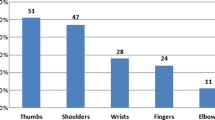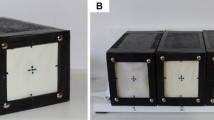Abstract
Background: Sensory feedback is reduced considerably in minimally invasive procedures by the interposition of instruments, causing loss of direct manual contact with the tissue. The purpose of this study was to evaluate the feedback quality of commercially available reusable and disposable laparoscopic dissectors.
Methods: A total of 31 participants were asked to feel a simulated arterial pulse with their bare fingers and through laparoscopic dissectors, tweezers, an orthopedic forceps, and a laparoscopic low-friction prototype. The absolute sensory threshold was determined by the psychophysical method of limits.
Results: The sensory feedback quality was significantly better for the reusable dissectors tested than for the disposable dissector (p < 0.001). Nevertheless, the reusable dissectors were at least eight times less sensitive than bare fingers. Furthermore, sensitivity qualities were highly variable, depending on the dissector tested.
Conclusions: This study showed that the overall sensitivity loss through instruments could be accurately assessed, proving that the sensory feedback for commercially available instruments was low compared to bare fingers. The good sensory feedback results of the prototype indicated that careful design could decrease the overall sensitivity loss.
Similar content being viewed by others

Author information
Authors and Affiliations
Additional information
Received: 30 June 1998/Accepted: 20 January 1999
Rights and permissions
About this article
Cite this article
den Boer, K., Herder, J., Sjoerdsma, W. et al. Sensitivity of laparoscopic dissectors . Surg Endosc 13, 869–873 (1999). https://doi.org/10.1007/s004649901122
Published:
Issue Date:
DOI: https://doi.org/10.1007/s004649901122



